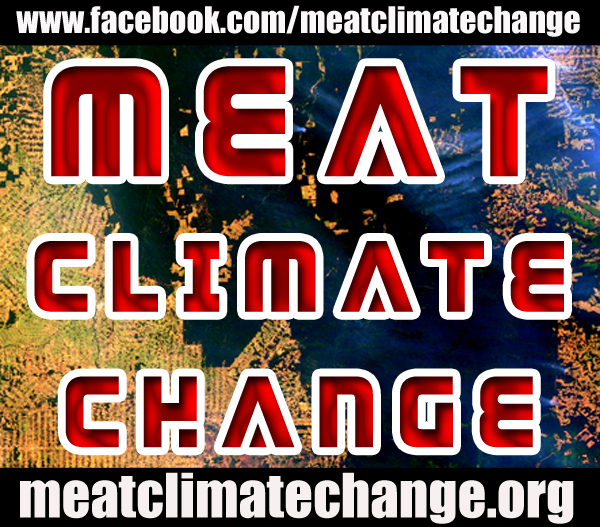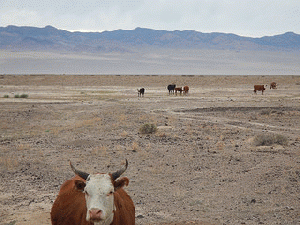With the industrialization of supply chains, millions of Westerners now eat meat two, or three times, a day. Food production is responsible for releasing vast amounts of global greenhouse gases, and climate change is already having a significant impact on food production. Moreover, livestock overgrazing is leading to massive loss of top soil, wars and climate change.
Governments, donors, and development agencies have all been active agents in the expansion of animal-based agriculture by pushing for aid and policy reforms that promote livestock production as one of the main means of solving global poverty and hunger. In practice, the funding of livestock and feed crops in the less developed world is a form of neocolonialism since the supply chain is controlled by multinational corporations, and the animal-based protein and crops are largely exported to Western, developed countries. Further, top soil preservation in the global South is a climate justice issue since overgrazing results in the displacement of thousands of indigenous and local groups.
This "solution" is also unsustainable since overgrazing of pasture land and savanna leads to reduction in long-term grazing productivity. For example, in Botswana, farmers' common practice of overstocking cattle to cope with drought losses made ecosystems more vulnerable and risked long term damage to cattle herds by depleting scarce biomass.
Demand for animal products is projected to increase by 50% from 2013 to 2025, and is already causing overstocking of fragile lands and massive desertification. Overgrazing, from the uplands of Ethiopia to the mountains of Nepal, creates loss of soil as well as flooding. The chief ecological impacts of overgrazing are loss of biodiversity, irreversible loss of topsoil, increase of turbidity in surface waters, and increased flooding frequency and intensity.
Further, livestock overgrazing practices are substantially reducing many grasslands' performance as carbon sinks, worldwide. Overgrazing occurs on 33% of all rangeland, and often, marginal rangelands are used intensively when historically productive adjacent range has become overgrazed and unproductive. The cycle of overgrazing, soil degradation, top soil erosion and loss of vegetation is rapidly expanding on all continents.
Overgrazing causes severe land degradation, and has been a major factor in wars in Darfur and Syria. Livestock is destroying valuable top soil and food shortages in 2008 led to civil unrest in 28 countries. Increasing livestock production will lead global conflict and impoverishment of millions to benefit the appetite of a global middle-class.
According to the FAO, globally, 70% of all grazing land in dry areas is considered degraded, mostly because of overgrazing, compaction and erosion attributable to livestock activity. Overgrazing can be considered the major cause of desertification in arid drylands, tropical grasslands and savannas, worldwide. Moreover, in arid and semi-arid drylands around the globe, overgrazing is the major cause of desertification.
Placement of high densities of livestock on a grassland removes biomass at a rapid rate, which produces a series of accompanying effects. The residual plants decline in mass density, and surface water infiltration is reduced. There is also a decrease in fungal biomass that rely on grasses.
Ground surface temperatures rise, which exaggerates the amount of evaporation and transpiration, and leads to increase aridity. In addition, overgrazing has a characteristic effect of reducing root depths. With impeded water uptake from the soil, a positive feedback loop of growth retardation is established.
At least 25% of the world's biodiversity lives underground, where, for example, the earthworm is a giant alongside tiny organisms such as bacteria and fungi. Such organisms, including plant roots, act as the primary agents driving nutrient cycling, and they help plants by improving nutrient intake, which in turn supports above-ground biodiversity.
Removing livestock, and better soil and land management that supports healthy soil organisms, can boost the soil's ability to absorb carbon and mitigate desertification. This could result in providing more food for the world and in more carbon being sequestered, thus helping to offset agriculture's own emissions of GHGs.
[Excerpt from the book, "Meat Climate Change".]






